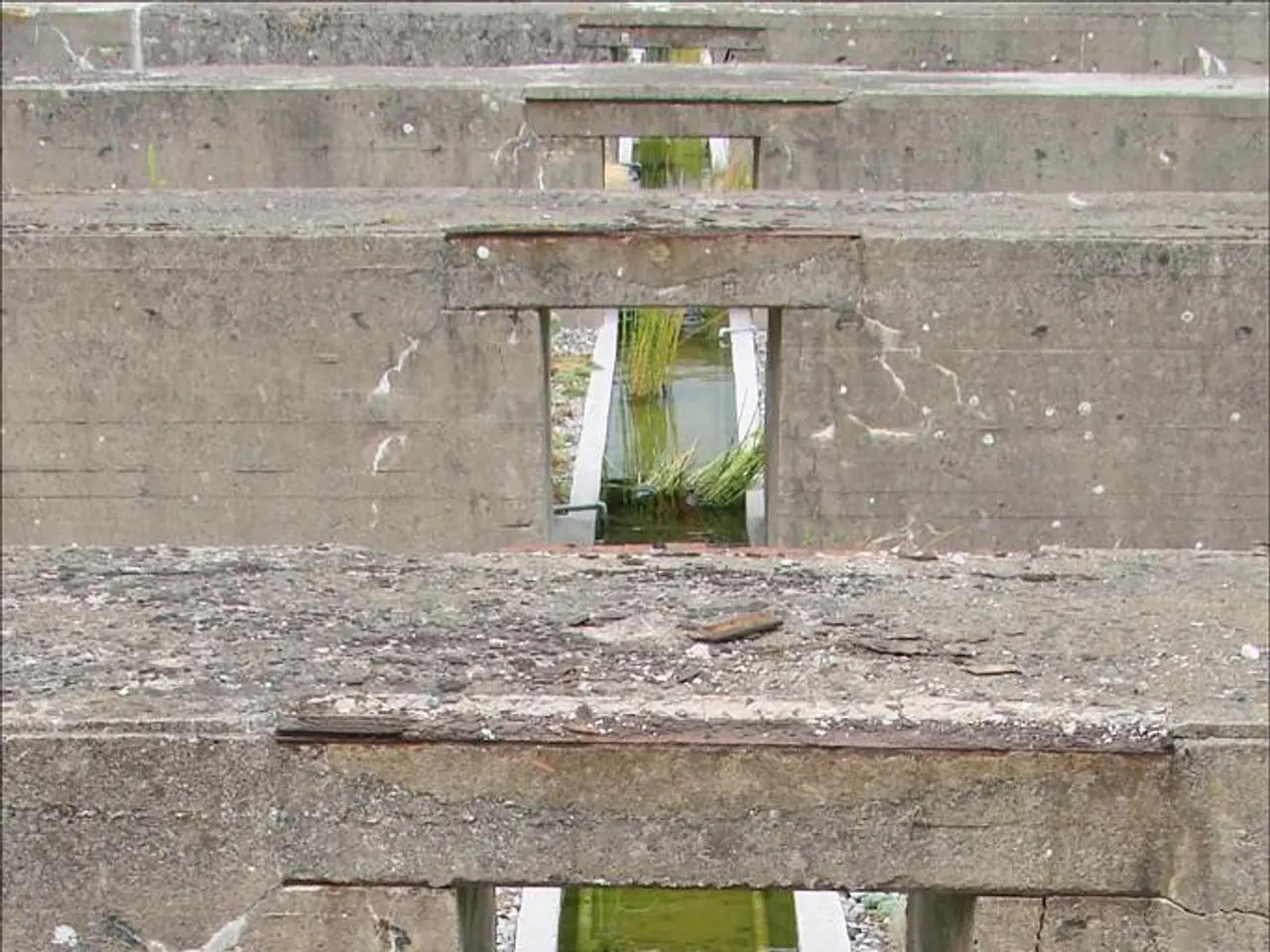Innovative Technique for Water Table Augmentation Unveiled in Experiment - Groundwater enhancement technique under trial phase
Berlin Tests Innovative Infiltration Trench Method to Boost Groundwater Replenishment
Berlin, the bustling capital city of Germany, is taking a significant step towards securing its water supply amidst the challenges of climate change and increasing droughts. The city's water utilities, Berliner Wasserbetriebe, are testing a new infiltration trench method in the Johannisthal area to enhance groundwater replenishment.
This cutting-edge approach involves creating deep trenches that allow more surface water to seep naturally into the ground, thereby increasing the city's groundwater reserves. During periods of drought, groundwater serves as a critical buffer for Berlin's water supply, helping to maintain stable availability when surface water sources like rivers and reservoirs diminish. By boosting groundwater recharge through these infiltration trenches, the method improves the resilience of Berlin’s water supply system against dry spells.
The infiltration trench technique offers several benefits. It helps increase the natural groundwater storage capacity, ensuring a more reliable water supply during drought conditions. Moreover, it supports sustainable urban water management, a crucial aspect in the face of climate change challenges.
The city has a history of using large rectangular basins for groundwater replenishment, such as at the Tegel or Spandau waterworks. However, the new method, which involves the use of a more than seven-meter-deep infiltration trench, offers an advantage due to its smaller footprint compared to the large basins. The water to be poured into the trench can be collected rainwater or river water, such as from the Havel. After being poured into the trench, the water seeps through the trench and into the groundwater.
In densely populated cities like Berlin, water sometimes has difficulty penetrating the soil. The advantage of the trenches is that they require less space compared to the large rectangular basins, making them a more practical solution for urban areas.
Currently, water consumption in Berlin is lower than usual due to the summer holidays and the rainy July. However, the goal of the new method is to stabilize water levels in Berlin, ensuring a consistent water supply for various uses, including drinking water, irrigation, and livestock drinking.
The new technology is currently being tested before potential implementation. If successful, it could represent a forward-looking environmental and infrastructural strategy to safeguard Berlin’s water security in the face of increasingly frequent and severe droughts.
In some areas where groundwater cannot replenish sufficiently, the water utilities supply it with pre-cleaned water from rivers and lakes. However, by enhancing groundwater replenishment through the infiltration trenches, the city aims to reduce its reliance on external water sources and promote a more sustainable water management system.
In summary, the infiltration trench technique helps to increase natural groundwater storage capacity, ensure a more reliable water supply during drought conditions, and support sustainable urban water management amid climate change challenges. This approach could play a crucial role in safeguarding Berlin’s water security in the future.
Read also:
- Chest Pain Caused by Compressed Nerves: A Possibility Explored
- Hypothyroidism in Canines: A Comprehensive Look, Written by Catherine Barnette, DVM, and Reviewed by Emily Oliver, CVT on 07/31/2025. Published on 07/21/2023. Sharing options include Facebook, Twitter, Email, and Print.
- Can diabetic retinopathy be reversed?
- Estimated healthy life years for a Latvian: Not numerously abundant






